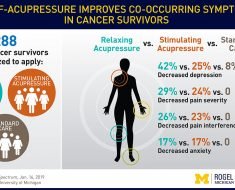While it’s long been thought that body dysmorphic disorder (BDD) is related to obsessive compulsive disorder (OCD), new findings show this is not as clear-cut as it would appear.
In a systematic review of research that has directly compared the two disorders, published in the Australian and New Zealand Journal of Psychiatry, researchers from Swinburne, Australian Catholic University (ACU) and other institutions found the disorders have less in common than previously thought.
“Despite psychiatry guidelines suggesting that BDD is an OCD type disorder, our review shows there is limited evidence to say this is true,” says lead Swinburne researcher, Professor Susan Rossell, Director of the Centre for Mental Health.
“This is important as we don’t want clinicians to think they can treat BDD in the same way as you would treat OCD—this isn’t a good model for them.”
Typical psychological treatments for OCD do not address many of the core features of BDD, including poor illness insight, body image distortion, changes in visual processing, and social fears, says Professor Rossell.
“We need to ensure that BDD treatment is specific and appropriate to the core features of the condition, as such a targeted approach is likely to improve treatment outcomes for individuals with BDD. “
Review findings
The review findings suggest that current thinking, which describes BDD as being closely related to OCD, has limited research support and requires further investigation.
Similarities between the two conditions included age of onset, illness course, and symptom severity, alongside high levels of functional impairment, increased perfectionism, and strong fear of negative evaluation.
“However, these similarities are often found in other conditions, and so do not tell us much about whether BDD and OCD share particularly meaningful overlaps,” says Professor Rossell.
In terms of differences, the review clearly showed that individuals with BDD have greater difficulties in gaining psychological insight into their symptoms.
In addition, the data suggested that individuals with BDD might have unique visual processing features, difficulty recognising facial expressions, more severe social anxiety, and difficulties in interpreting social situations as compared to those with OCD.
Further investigation
To further understand the differences between OCD and BDD, Swinburne and ACU are leading a large, first-of-its-kind study.
“Currently, we’re conducting a large study that aims to compare BDD and OCD across several of these key areas, and additional areas that have not been studied before,” says Professor Rossell.
“In particular, we are examining the neurocognitive profile, visual processes, facial affect recognition abilities, thoughts and beliefs about the sense of self between these disorders. We are also using brain imaging to directly compare brain structure and activity between BDD and OCD, which has never been done before now.”
Participants attend two assessment sessions including clinical interviews, computer and pen-and-paper tasks. They also undergo a magnetic resonance imaging (MRI) scan at Swinburne to capture images of their brain structure and activity.
Source: Read Full Article





